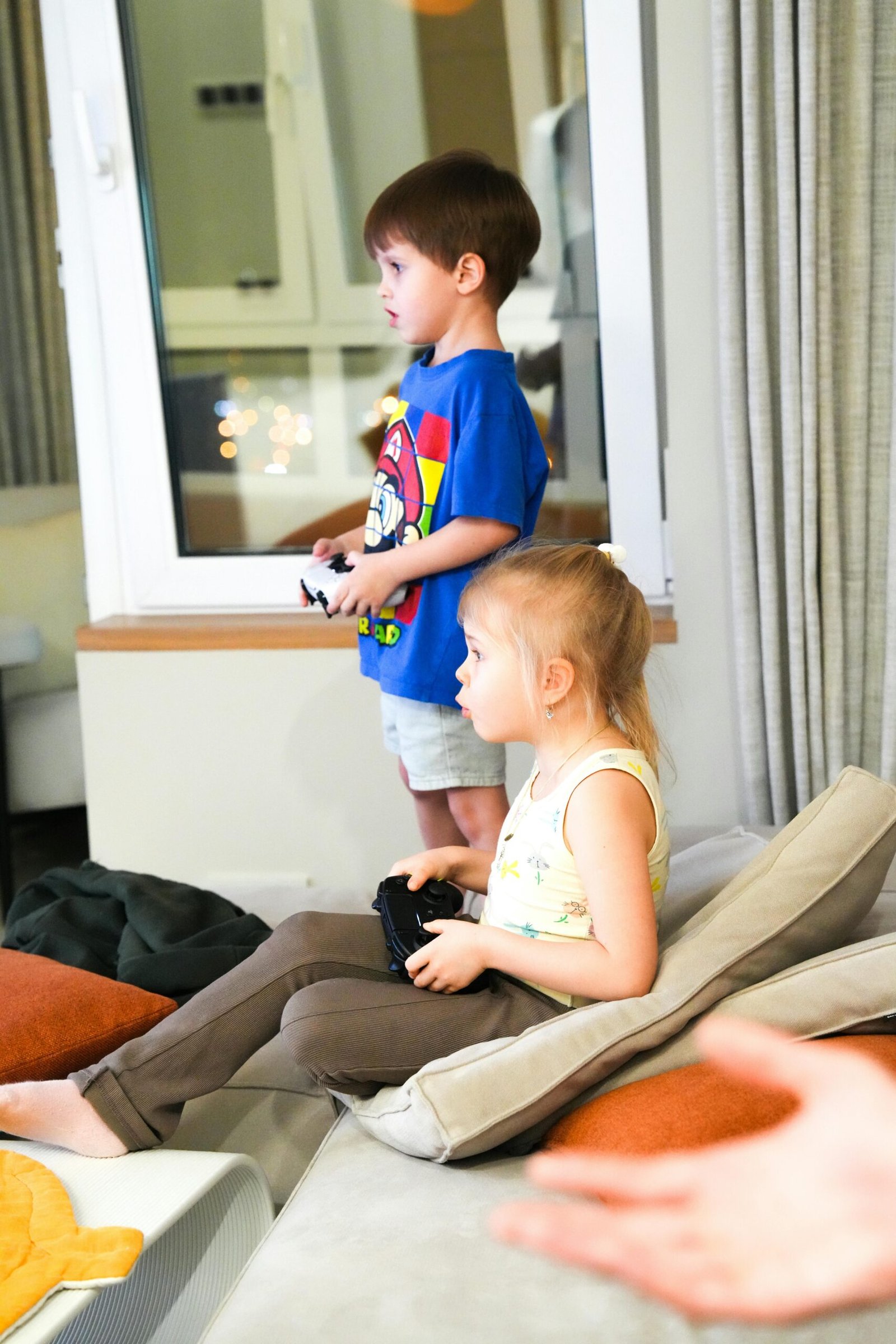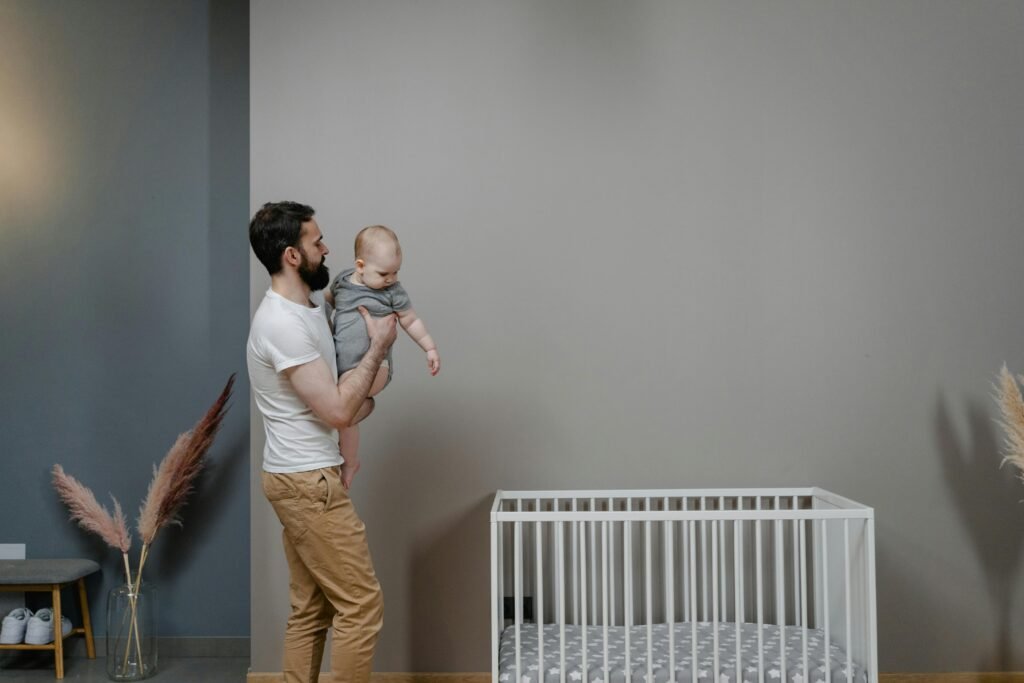Welcome to the exciting (and sometimes overwhelming) adventure of parenthood! While raising a child is full of precious moments, ensuring your home is safe and baby-proofed is a crucial step in giving your little one the room to explore without unnecessary risks.
From curious crawlers to independent toddlers, your child’s safety hinges on creating a secure environment at every stage of their development. This guide will walk you through all the steps of baby proofing, from room-by-room tips to choosing the right products and beyond. By the end of this post, you’ll have all the tools and knowledge needed to create a safe haven for your child—and peace of mind for yourself.
Room-by-Room Guide to Baby Proofing
The Nursery
Your baby will spend a lot of time here, so making it a secure, calming space is key.
- Crib Safety: Ensure the crib meets safety standards with slats no wider than 2 3/8 inches apart. Skip the soft bedding and pillows, which can pose suffocation risks.
- Securing Furniture: Anchor heavy items like dressers and bookshelves to the wall. Curious toddlers can easily pull these down while climbing.
- Outlet Covers: Protect tiny fingers by using tamper-resistant outlet covers.
Quote from child safety expert Janet Morgan:
“Parents should start thinking about baby proofing even before the baby starts crawling. It’s easier to plan ahead than to play catch-up when your child is mobile.”

Living Room
The living room is where many families spend time together. Keep it baby-friendly with these tips.
- Corner Protectors: Add soft covers to sharp furniture edges, like coffee tables, to prevent bumps and bruises.
- Secure TVs and Electronics: Use wall mounts or anti-tip straps for large TVs and keep cables completely out of reach.
- Toys and Small Objects: Store small or hazardous items (including remote batteries) out of reach.
Kitchen
The kitchen is full of potential hazards, but with a few adjustments, you can reduce the risks:
- Childproof Locks: Install locks on all cabinets and drawers that contain cleaning supplies, sharp objects, or breakable items.
- Stove and Oven Shields: Place knob covers or use a stove guard to keep your toddler from fiddling with these hot surfaces.
- Secure Trash Cans and Fridges: Use latches to prevent little hands from opening potentially hazardous areas, like a trash bin or the refrigerator.
For a more advanced solution, explore products like childproof doors or locks, which limit access to the kitchen altogether.
Bathroom
Bathrooms are small but pose significant risks to children.
- Toilet Locks: Prevent accidents by using locks on toilet lids.
- Non-Slip Mats: Use a textured bath mat to reduce the risk of slipping during bath time.
- Store Products Safely: Keep medicine, razors, and cleaning supplies on high shelves or locked away.
Hallways & Stairs
Mobility means curiosity, and stairs quickly become a magnet for exploration.
- Safety Gates: Install sturdy gates at both the bottom and top of stairs. Look for options certified to meet safety standards in the USA, like gates from Kid Protector USA.
- Non-Slip Strips: Adhesive strips on steps can prevent slips for both parents and children.
- Door Security: Research how to toddler-proof a security door with additional locks to stop unsupervised wandering.
Outdoor Spaces
Don’t forget to baby-proof your backyard or balcony.
- Fencing: Secure any open areas, pools, or balconies with safety fences or mesh.
- Chemical Storage: Keep gardening products and tools locked away in a shed or storage unit.
Essential Baby Proofing Products
When it comes to baby proofing, the right tools make all the difference. Here’s a list of must-have items to get you started:
- Safety Gates: Look for pressure-mounted or hardware-installed options.
- Cabinet and Drawer Locks: Magnetic locks are highly effective and discreet.
- Corner Protectors: Choose adhesive-based ones for easy application on furniture.
- Outlet Covers: Consider sliding outlet plates for a low-maintenance option.
- Edge Bumpers (for fireplaces, glass tables, etc.)
- Baby Monitors with motion and sound detection for peace of mind.
Pro tip from parent Ella Jennings:
“You don’t need to break the bank to baby-proof! Many stores carry affordable yet effective safety gear. Just focus on the key areas—stairs, cabinets, and sharp edges.”

DIY vs. Professional Baby Proofing
DIY Baby Proofing
If you’re a hands-on parent, DIY baby proofing is a budget-friendly option. Many basic safety tools are simple to install, requiring minimal time and tools.
Pros:
- Cost-effective
- Customizable based on your home layout
- Fun weekend project with your partner!
Cons:
- Time-intensive
- Risk of overlooking less obvious hazards
Professional Baby Proofing
Hiring an expert can save you time and ensure every inch of your home is thoroughly checked.
Pros:
- Expertise in identifying hard-to-spot risks
- High-quality installation
- Peace of mind knowing everything is secure
Cons:
- Higher upfront cost
Investing in professional services is particularly beneficial for families with larger homes or unique layouts.
Safety Beyond Baby Proofing
Baby-proofing products are just the beginning. Adopt these habits to keep your home a safe environment as your child grows:
- Supervision is Key: No matter how well baby-proofed your home is, adult supervision is the ultimate safety measure.
- Emergency Readiness: Learn basic first aid and keep emergency contact numbers easily accessible.
- Keep Tiny Hazards Away (e.g., coins, small beads)—a choking hazard can be overlooked if left on the floor.
- Regular Check-Ups: Kids grow fast (and their abilities change regularly). Routinely evaluate your home for new risks.
Dr. Emily Carter, pediatrician, advises:
“The key to child-proofing is staying one step ahead of your toddler. Be proactive, not reactive!”
Create a Safe and Loving Space for Your Child
A baby-proofed house is more than just a safe environment—it’s a home where your child can freely explore with confidence and curiosity, and where your worries about accidents are minimized.
Baby-proofing doesn’t have to be overwhelming or expensive, but it does require planning, vigilance, and the right tools. Share this guide with friends or family who could use a little help baby-proofing their homes—you might just make their life easier!
Looking for extra guidance? Visit our website to connect with childproofing consultants or shop trusted safety products. Together, let’s build safe spaces for our little ones!



